Archived UCMP Short Courses 2016-1995
2016 |
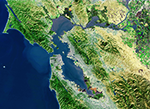 San Francisco: Past, present and futureThe San Francisco Bay estuary is one of the most important ecological habitats in California and its presence influences most everything unique about the Bay Area — the geography, the weather, the people. Earthquakes, sea level change, erosion, and other geological processes have shaped the Bay and surrounding landscape for thousands of years. Today and throughout the history of human settlement in the Bay Area and northern California, the Bay has been affected by human activity in a multitude of ways — from hydraulic mining during the gold rush, the introduction of non-native species to the Bay, and to the ongoing modification of the Bay shoreline in a region more than 7 million people call home. Join us to explore the state of the Bay and hear from experts on the Bay's history and the Bay's future as we consider the human and non-human causes of change continuing to shape San Francisco Bay. This short course was cosponsored by the Berkeley Natural History Museums (BNHM) and Science@Cal. |
2015 |
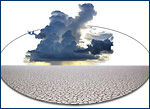
Global change: Connecting Earth's deep history to life todayNew scientific research is unveiling the multitude of ways that global change processes have shaped Darwin's "great Tree of Life, which fills with its dead and broken branches the crust of the earth, and covers the surface with its ever-branching and beautiful ramifications." From the movement of the tectonic plates that form that crust, to the shifts in climate that have occurred throughout Earth's history, these sweeping changes have interacted with one another and broadly impacted the course of life on Earth. Today, of course, human activity represents an additional mechanism of global change that is poised to shape the Tree of Life in a multitude of ways. This short course explored the deep connections that tie Earth systems to changes in biodiversity throughout Earth's history. This short course was cosponsored by the Berkeley Natural History Museums (BNHM) and Science@Cal. |
2014 |
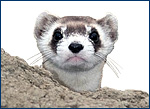
Where have all the species gone? The processes and patterns of extinctionThroughout Earth's history, biodiversity has been molded by extinction. Today, the study of species survival has taken on new urgency as rapid changes in ecosystems, climate systems, and human populations threaten an increasing proportion of our biota. We learned about the complex web of interacting mechanisms that influence extinction both in deep time and today, and explored the physical, biological, and anthropogenic drivers of background and mass extinction, the role of extinction in restructuring communities, and the evolutionary opportunities that extinction events leave in their wake. The speakers were Seth Finnegan, UCMP Curator and Assistant Professor, Dept. of Integrative Biology, UC Berkeley; Pedro Marenco, Assistant Professor, Bryn Mawr College, Pennsylvania; Alison Boyer, Research Assistant Professor, Ecology & Evolutionary Biology, University of Tennessee; Jonathon Stillman, Assistant Adjunct Professor, Dept. of Integrative Biology, UC Berkeley; and Tony Barnosky, UCMP Curator and Professor, Dept. of Integrative Biology, UC Berkeley. This short course was cosponsored by the Berkeley Natural History Museums (BNHM) and Science@Cal. |
2013 |
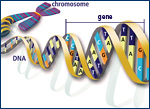
Unraveling the Genome: What we've learned and why it mattersThe genome sequence of an organism includes the collective DNA sequences of each chromosome in the organism, whether it be a bacterium, a honey bee, or a chimpanzee. Unraveling and comparing genomes informs our understanding of evolution, biodiversity, conservation, and the very essence of life. From the basics of genome sequencing to horizontal gene transfer and jumping genes, this short course focused on what we have learned and why it matters. The speakers were Jeffrey Boore, CEO of Genome Project Solutions and Adjunct Professor, UC Berkeley; John W. Taylor, Professor, Dept. of Plant and Microbial Biology, UC Berkeley; Mansi Srivastava, Postdoctoral Researcher, Whitehead Institute for Biomedical Research, Massachusetts Institute of Technology; Emilia Huerta-Sanchez, Postdoctoral Researcher, Dept. of Integrative Biology, UC Berkeley; and Rob DeSalle, Curator, Sackler Institute of Comparative Genomics at the American Museum of Natural History. This short course was cosponsored by the Berkeley Natural History Museums (BNHM) and Science@Cal. |
2012 |
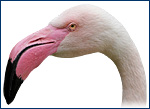
Evolution is the only explanationAs we look at the biodiversity around us, we stare in wonderment at complex courtship behaviors, bizarre ornamentation and display, extraordinary adaptations to severe conditions, and unusual means of communicating, eating, and reproducing. The diversity is overwhelming and evolution is the only explanation! The speakers were Kim Bostwick, Curator of Birds and Mammals, Cornell University Museum of Vertebrates; Damian Elias, Assistant Professor, Department of Environmental Science, Policy and Management, UC Berkeley; Stephen Glickman, Professor Emeritus of Psychology and Integrative Biology, and Director of the Field Station for the Study of Behavior, Ecology and Reproduction; Craig Moritz, Director, Museum of Vertebrate Zoology and Professor, Department of Integrative Biology, UC Berkeley; and Marlene Zuk, Professor of Biology, UC Riverside. This short course was cosponsored by the Berkeley Natural History Museums (BNHM) and Science@Cal. |
2011 |

The return to the sea: The evolution of marine mammalsBoth morphological and molecular data tell us that the ancestors of the marine mammals were terrestrial, and that their various marine lifestyles have evolved independently at least seven times! Each lineage shows shared as well as unique evolutionary solutions to the challenges of living in water affecting their breathing, locomotion, feeding and giving birth. Telling us about these solutions and how we know what we know about their triumphant return to the sea were speakers Dan Costa, Distinguished Professor of Ecology and Evolutionary Biology, UC Santa Cruz; James Estes, Professor of Ecology & Evolutionary Biology, UC Santa Cruz; David Lindberg, Professor of Integrative Biology and Curator in the UC Museum of Paleontology, UC Berkeley; Nick Pyenson, curator of fossil marine mammals at the Smithsonian Institution's National Museum of Natural History; and Terrie Williams, Professor of Biology, UC Santa Cruz. This short course was co-sponsored by the Berkeley Natural History Museums (BNHM) and the California Science Teachers Association (CSTA). |
2010 |
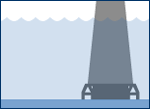
Predicting the future of San Francisco Bay: Learning from historyThis short course brought together experts to talk about the geologic, tectonic, and ecologic history of the San Francisco Bay so that we might gain a better understanding of its future. The speakers covered such topics as the geologic and tectonic processes that shape the Bay; the human impact on the Bay: modification of shorelines, elimination of marshes, ecologic change through the introduction of pollutants and non-native organisms. The course closed with a discussion of strategies for adapting to future changes in the Bay. The speakers were Doris Sloan, Adjunct Professor in Earth and Planetary Science, UC Berkeley; Jere Lipps, UCMP Faculty Curator, UC Berkeley; Robin Grossinger, San Francisco Estuary Institute; Andrew Cohen, Director of the Center for Research on Aquatic Bioinvasions (CRAB); and Will Travis, Executive Director of the San Francisco Bay Conservation and Development Commission (BCDC). |
2009 |
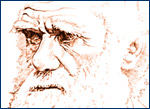
Darwin: the man, his science, and his legacyCharles Darwin was born on February 12, 1809. His birthday was an opportunity to celebrate his contribution to science and its influence in such diverse academic fields as biology, anthropology, and medicine. To kick off the multiple celebrations that were to take place in the Bay Area, UCMP offered an opportunity to join historians and evolutionary biologists as they discussed the extraordinary life of Charles Darwin, his contributions, his legacy, and our current understandings of evolutionary theory. Speakers included Keith Thomson, Kipling Will, Kevin Padian, and Eugenie Scott. As an added bonus, a teacher workshop on evolution was presented by UCMP, the California Academy of Sciences, Human Evolution Research Center, KQED QUEST, SETI, and the National Center for Science Education the following day. The workshop, held in 2063 VLSB, included behind-the-scenes tours of the Human Evolution Research Center. |
2008 |
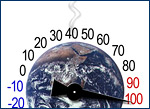
Global Climate Change and Its Influence on EvolutionFive speakers discussed how climate has affected life (and vice versa) through time: how the terrestrial biota has responded to periods of warming and cooling throughout Earth's history; how climate has (or has not) affected human evolution; how plants both affect and respond to climate change; how modern plants and animals are responding to climate change and what we can expect to see in the future; and human-caused climate change. |
2007 |
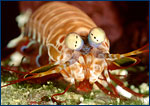
The Implications of Evolution: Evidence and ApplicationsSpeakers shared their current research in evolutionary biology: a discussion of how all complex organisms have come to rely upon coevolved relationships to survive and reproduce; new research on the strike functions of mantis shrimp (right) and their amazing visual and communications systems; paleontological and genetic studies of a baboon colony that provide insights into how animals have evolved over time; research on aerial behaviors in ant workers of the tropical rain forest canopy; a discussion of current antievolution strategies, the intelligent design movement, and recent legal decisions concerning the teaching of evolution. |
2006 |
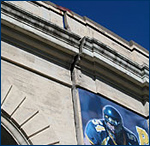
California on Shaky GroundCommemorating the 100th anniversary of the 1906 San Francisco earthquake, the short course began with geologists and seismologists discussing the Bay Area's seismic history, advances in earthquake science, the threat of tsunamis, and what's being done to better understand how earthquakes work. On Sunday, a special workshop for teachers included a series of practical, standards-based, hands-on activities appropriate for grades six and higher. Teachers also took a campus tour to see evidence of movement on the Hayward Fault, such as this crack in Memorial Stadium (right). |
2005 |
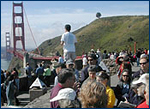
Revisiting the Uniqueness that is CaliforniaDue to the popularity of 2004's short course theme, we decided to stay with it. New speakers spoke on new topics, such as California's seismic origins, dinosaurs, sharks, terrestrial vertebrates, and redwood ecology. On Sunday, Jere Lipps explained the major geological processes responsible for producing our local landforms and the diverse biological communities that they support during a geologic tour of the Bay Area. |
2004 |
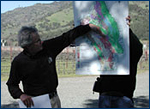
The Uniqueness that is CaliforniaThis course featured a one-day series of speakers, each sharing their research as it relates to the uniqueness of California — its geology, paleontology, biodiversity, and peoples. An optional field trip led by David Howell of the USGS gave an interesting perspective on the connections between geology and climate and the production of the wonderful wines of the Napa Valley. |
2003 |

The Evolution SolutionThis course focused on a series of case studies illustrating the importance of evolution in our understanding of biodiversity and behavior, as well as its relevance to our society. Topics ranged from the evolutionary "baggage" exemplified by marine mammals, to evolutionary strategies used by plants to cope with changing CO2 levels, and the origin of modern humans and the evolution of their behavioral advances. |
2002 |
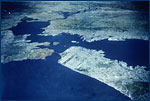
Back to the Future: The History of the San Francisco BayThis two-day course focused on the past, present, and future of the San Francisco Bay, including geology, ecology, and human impacts. Saturday's lecutures touched on sea level fluctuations, geologic processes, and much more. A Sunday cruise on the Bay offered participants an opportunity to see many of the features discussed during the lectures. |
2000 |
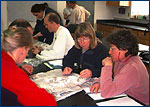
Tracking the Course of EvolutionAbout 200 participants enjoyed a comprehensive look at the evolution of life on Earth. Saturday's lectures, for a general audience, covered a variety of topics from microbes to plants to evolution and systematics. Sunday's presentations targeted classroom teachers, including a discussion with scientists, teaching strategies and hands-on activities. |
1999 |
"Original" Thoughts: Interpreting the Evidence for Origins and EvolutionThis two-day short course focused on a series of lectures on Saturday covering the origins of life, the Cambrian Explosions, the challenges of terrestriality, novel structures, adaptation, and the origin of human social bonds. Sunday provided a series of hands-on activities appropriate for grades 6-12 on associated subjects. (Offered in March) |
1997 |
Our Pleistocene HeritageThis two-day short course focused on a series of lectures on Saturday covering the geology, fauna and flora of California 1.8 million to 11,000 years ago. This was followed by a Sunday field trip viewing Pleistocene sites in both Marin and Sonoma counties. (Offered in February) Biodiversity, Past and PresentA series of lectures on different perspectives on diversity that went beyond the buzzwords, the tree-hugging, the sloganeering, and the doomsaying — to the science itself. Topics included: diversity through time, extinctions as a natural process, the myth of stability of communities, conservation decisions and case studies. (Offered in November) |
1996 |
UCMP Anniversary Lecture Series• Our Earliest Ancestors: New Discoveries from the Middle Awash, Ethiopia — Professor Tim White (October) • Keeping House and Minding the Store: Seashells, Museums and How they Contribute to Our Understanding of Economics — Professor Geerat Vermeij (November) • The Decline of Reason: Science, Pseudoscience and Antiscience in America — Professor Jere H. Lipps (December) A Symposium on OriginsThis series of lectures focused on origins and evolution — from that of the Universe, to the Solar System and the Earth, and then to the origin of life in general, animals, plants, humans, and even life beyond Earth. (Offered in December) |
1995 |
Tracking the Course of EvolutionThis inaugural two-day short course focused on a series of lectures on both Saturday and Sunday covering the Precambrian life, adaptations, dinosaur evolution and extinction, origin of mammals and the evolution of humankind. The lectures were interspersed with tours of the collections, slide shows, demonstrations of web-based resources, and hands-on activities. (Offered in December) |